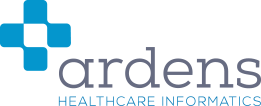Last review date 23/01/2025
The Local Enhanced Service (LES) templates and reports are included as part of the Ardens Plus & Pro packages. These resources consolidate all service specifications, templates and reports in a single location, thereby enhancing efficiency and reducing time spent searching through folders. For additional information, please contact us.
To access your LES template, navigate to Auto-consultation > ardens CONTRACTS > Local Enhanced Services or search for your ICB name in the bottom left corner of SystmOne. Additionally, this template can be added to F12 favourites for quick access.
The LES template comprises sections for various domains and includes fields for payment and audit indicators. It also provides links to specifications and the Ardens Manager LCS Dashboard, available to subscribed users. The home page provides a 'view' to identify any outstanding 'work to do' for the patient.


On the main Ardens consultation templates, for example 'LNG-IUD coil fitting', there is a yellow star next to any LCS field. There may also be red stars for QOF and blue stars for NCD and other national contracts.
Please note: These yellow stars are not specific to your ICB, as this is not possible. However, you can navigate to the yellow star icon, lower-right of the template which will direct you to your local LCS template.

Reporting
The corresponding reports can be located by navigating to:
Clinical Reporting > Ardens > Contracts | Local Contracts
Work to do reports
In the 'Work to do' folder you will see a list of all outstanding work to do. As a new feature of Ardens Plus & Pro on SystmOne, we are beginning to implement a new single report which will run all reports required for your LCS, without the need to run each individual report.
As an example for HWE ICB, the reports contain instructions in brackets in the title of the report:
2024-25 | All work to do - HWE (Right click> Run. Select 'last Run' > All reports required for specification are grouped below as the same 'run date & time')

- Locate your ICB specific report from the list
- Right click on the report and select run
- Once the report has updated, click the 'Last run' column header which will sort the reports by the last run date
- This will list all required reports required for your LCS

| TIP: You can also create a patient status alert for this report to identify any patient with work to do when their record is opened. |
Work done reports
Go to the annual, quarterly or monthly folders to see the work done during that time period.
As above, if this has been set up for your ICB you may also use the single report to run all of the LCS reports in one go.
Some LES indicator reports require an item or activity count, not number of patients. An example is phlebotomy tests done as a patient may have had more than one blood test done during the time period. Once the report has been updated, it is necessary to 'breakdown' the report and select 'item count'. For further information on this, please see this support article.

Frequently Asked Questions
Why are code clusters used?
There may be instances where multiple SNOMED codes exist that convey the same clinical meaning, such as 'ashtma review' and 'asthma monitoring'. If your data is reported by an ICB (Integrated Care Board) or Public Health Department, it is essential that they incorporate the relevant code used within Ardens. This process is straightforward and aligns with the methodologies employed in QOF, NCD, CQRS, SMI and other contractual frameworks and code clusters. Should you require an assistance regarding this matter, please contact us.
Rationale for Quarterly and Annual LCS Prescribing Reports
The reporting of LCS prescribing presents complexities within both EMIS Web and SystmOne, primarily due to various factors that impact the accuracy of data submissions. The objective is to ensure that practices receive appropriate renumeration for the monitoring activities conducted for patients prescribed medications within a specified timeframe.
A primary challenge in this process is the interpretation of the term 'on a drug'. Given that prescriptions may extend beyond a one-month period, registers that examine data over intervals shorter than a quarter may fail to accurately capture relevant prescriptions. Consequently, if reporting is conducted monthly, there is a risk that patients maybe excluded from reports despite being actively prescribed medication, as these prescriptions may not fall within the specified reporting window.
Furthermore, the absence of specific drug monitoring codes—relying instead on generic codes such as 'DMARD monitoring' and 'high-risk drug monitoring'—complicates the situation. This allows for potential misclassification, where monitoring intended for one drug may erroneously be recorded under another if the register lacks precision.
In light of these challenges and to promote accuracy in reporting and adherence to best practices, Ardens constructs LCS prescribing reports exclusively on a quarterly and annual basis. Should your Integrated Care Board (ICB) request monthly prescribing reports, it is advisable to utilize the quarterly reports instead.
Further learning
We invite you to access Ardens Academy and enrol in the Introduction to Local Contracts (LCS) module to enhance your knowledge.

